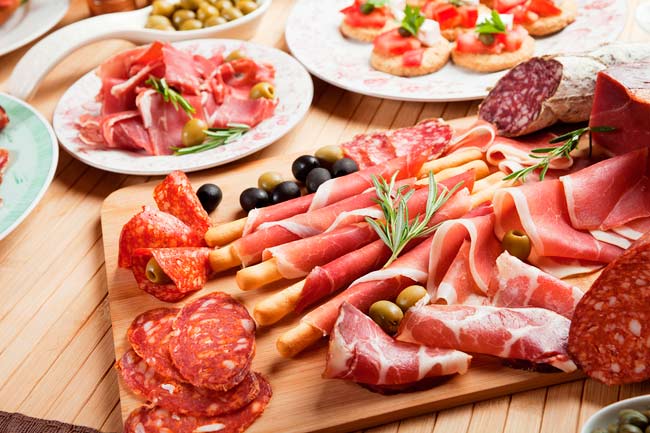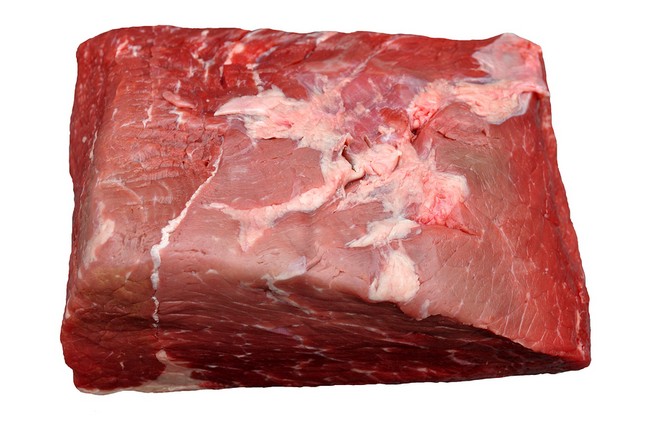- Make It Yourself Lavender Heart-Shaped Bath Bombs!
- 20 Things You Never Knew About “Down There”
- 12 Best Foods For Those Suffering From Arthritis Pain
- 12 Personal Hygiene Mistakes Almost Everyone Makes (Mom Never Told You About #4!)
- 15 Medicinal Plants And Herbs From The Cherokee People
- 12 Mind-Blowing Benefits Of Drinking Coconut Water During Pregnancy
- 12 Outstanding Winter Foods That Won’t Fatten You Up Like A Christmas Turkey
The Shocking and Disgusting Things That are Hiding in Your Meat and Processed Foods

Photo credit: bigstock.com
Ever since the horsemeat scandal, more people than ever before are looking more closely at the food they eat. However, the sad truth is, no matter how many labels you read, you might be eating things you can’t even imagine. Besides the food additives, chemicals, preservatives, and artificial colors, you might be shocked to find out all the things that are in the foods the FDA says is safe.
1. Human Hair
It’s happened to all of us at one time or another: you sit down to a great meal and yuck, a hair! Although it’s virtually impossible to imagine that we won’t find a hair eventually, that’s not exactly what we are talking about here. Amino acids are part of the building blocks of your body, but not all amino acids are the same. One amino acid is used to prolong shelf life, L-Cysteine. This amino acid is found in chicken and duck feathers, even cow horns, but mostly it is used in food in the form of human hair. Seriously. L-Cysteine is made from human hair collected in China, then sold all over the world. So we aren’t talking about a stray hair every now and then finding its way into your food, we mean preservatives that are made from human hair.
You can avoid this by purchasing your bread from a local baker, as it’s not an additive you find in flour. L-Cysteine is in most supermarket breads and breads used in fast food joints.
2. Beaver WHAT?
Hold onto your hat. If you eat raspberry, strawberry, or vanilla ice cream, chances are very good that you are eating beaver anal glands and/or urine secretions. It’s true. Castoreum comes from the castor sacs of beavers, and is a popular food additive in ice cream. This is FDA approved and is even allowed to be called “natural flavoring.” Well, it is natural….for beavers! Make your own ice cream at home or try some other flavors!
3. Carbon Monoxide
You have heard of carbon monoxide poisoning, of course, but did you know that you are being exposed to this potentially lethal gas every time you eat beef? Beef is injected with carbon monoxide to extend shelf life and prevent spoilage.
Continue to Page 2

Photo credit: bigstock.com
4. Rodent Hair
You are probably already aware that keeping rodents out of any facility that makes or stores food is next to impossible. Even some 5 star restaurants have been found to have mice or rats. Making food at an industrial facility is no different. Even the FDA realizes this and they allow for rodent hair in various products. You are probably saying, no they don’t, but, oh yes, they do! The FDA calls it “unavoidable defects.” That’s why they allow one rodent hair in every 100g of chocolate, 5 rodent hairs in every 18oz jar of peanut butter and 22 rodent hairs in every 100g of cinnamon. It appears rodents really like cinnamon. If you found rat or mice hair in your food at home, you would ditch it, wouldn’t you? Since the FDA thinks it’s OK for us to eat rodent hair, perhaps we are better off cooking at home using as many raw, organic ingredients as possible.
5. Coal Tar
All processed foods have long lists of ingredients including dyes, sometimes called artificial colors, and almost all of those dyes come from coal tar. Yes, it’s exactly what it sounds like, tar that is derived from coal. One dye called Yellow #5 (sometimes listed as tartrazine) has been linked in studies, one as recently as 2007, to hyperactivity in children. The European Union says that these dyes must come with warning labels, but in America, however, there are no such regulations. Reconsider using any processed food product, especially those with artificial colors.
6. Nitrates and Nitrites
These are toxic chemicals that are used to prevent the bacterial growth in meat and make them appear pink in color so the consumer will believe they are “fresher.” These are often used in processed meats such as bacon and hot dogs. Nitrates and nitrites have been linked in numerous studies to an increased risk of developing colorectal cancer. Read more why you should switch to grass fed meat.
7. Arsenic
Traces of arsenic in food aren’t really anything new, but this carcinogen has been turning up in just about everything lately, from rice to juice to baby cereal. German researchers have recently found traces of it in beer and noted that some beers had levels that were twice as high as what is allowed in drinking water. Believe it or not, arsenic is found in many drinks, especially beer and wine, which are super clear in color. This is because no one wants to drink a cloudy looking chardonnay, so manufacturers filter these drinks through diatomaceous earth.DE is a natural compound, but it does contain iron, metals, oh yes, and arsenic. Want to drink less arsenic? Look for drinks that say they are unfiltered.
Continue to Page 3

Photo credit: bigstock.com
8. Antibiotics
Big dairy and meat farmers raise cows in such poor sanitary conditions that they pump them with antibiotics in hopes of avoiding the spread of disease. The problem with this practice is that these antibiotics end up in the meat of the animal, which we then consume. This means that we are being overexposed to antibiotics, which is what creates those superbugs: pathogens and bacteria that are resistant to antibiotics. Buy meat which states that is was not given growth hormones or antibiotics. Yes, it costs more, but it is so worth it! Find out more top 5 ugly truths meat industry hopes we will never find out.
9. Antifreeze
Yes, the same stuff you put in your car’s radiator! Of course you aren’t drinking pure antifreeze whenever you chug a soda, but you are still consuming a bit of antifreeze with almost every soda, flavored water, or sports drink. Propylene glycol, more commonly called antifreeze, is used in just about everything from electronic cigarettes to pharmaceuticals, foods to cosmetics. The European Union does not allow antifreeze in its food products but the FDA thinks it’s OK for you, America.
10. Transglutaminase
This is a big word that basically means glue. It’s an enzyme that is used to stick pieces of meat together, which is how they make many chicken patties, chicken nuggets, and sausage patties. This is another one that is absolutely banned in the European Union but is still used everywhere in the US.
No matter how you look at it, none of this stuff belongs in our bodies, even “natural” things like rodent hair! You can avoid a great deal of these issues by buying locally grown foods, organic foods, reading labels carefully, and learning to cook from scratch so you can avoid those processed foods.
Sources:

































Ed Schumacher
Apr 14, 2016 at 2:18 pm
Propylene Glycol Is not “anti-freeze.” That is called Ethylene Glycol.